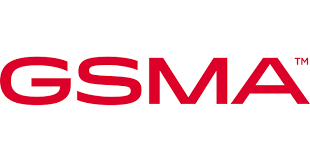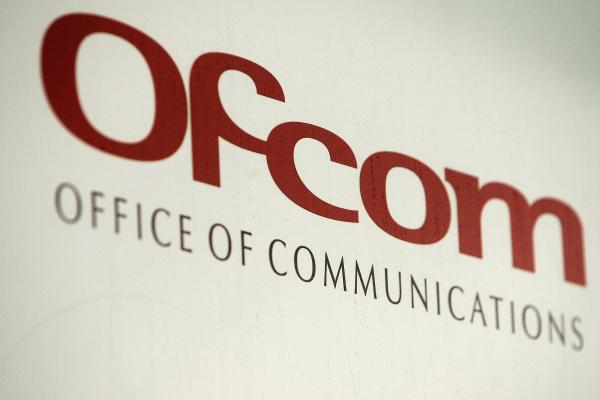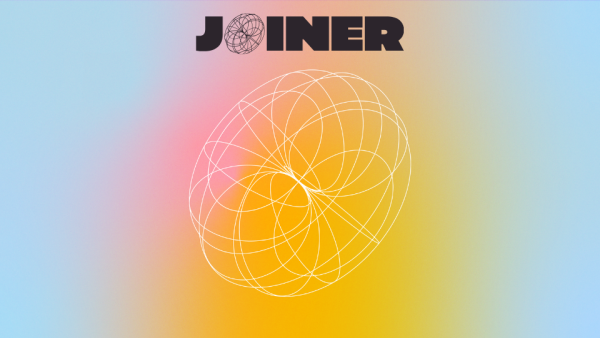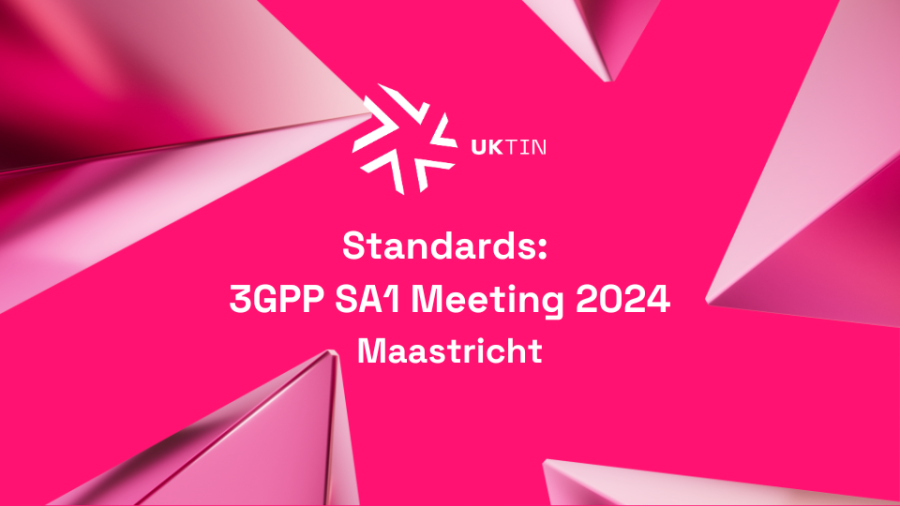
To ensure that SMEs have a front-row seat to telecoms standards making, our Standards Champion, Andy Reid, attends key standards meetings to observe, participate in conversations and report back on key themes and discussion points.
Here, Reid shares his reflections on the recent 3GPP SA1 meeting in Maastricht.
What is 3GPP and was does SA1 do?
The 3rd generation partnership project (3GPP) is an organisation founded by six regional standards bodies (including ETSI from Europe) to develop global specifications for mobile networks and end user devices (e.g. smartphones). It is the primary body for mobile standards.
3GPP is organised into three technical specification groups (TSGs): services and architecture (SA), radio access network (RAN), and core network and terminals (CT). These TSGs are then organised into working groups (WG), each with a remit to cover a specific aspect of the overall work which it submits to its TSG for approval. This meeting in Maastricht was a meeting of all the WGs and this blog reports and reflects on the activity within the SA1 working group, which is responsible for features and use cases and is the notional starting point for any new service features, which right at the moment, includes 6G.
The hot topics at this meeting
Whilst there were a number of on-going items on the agenda mainly under the umbrella of “5G Advanced”, the main topic was defining the service features which will be included in 6G.
6G study item description (SID) and draft technical report (TR) outline
This study item kicks off 6G within 3GPP. The aim is to define the new and enhanced service features which 6G will support together with use cases which illustrate these service features.
ITU-R, under their IMT-2030 initiative have already developed their high-level view in ITU-R recommendation M.2160 and summarised in their ‘wheel diagram’ below. This expands the three primary services of 5G (enhanced mobile broadband (eMBB), ultra reliable low latency communications (URLLC), and massive machine-type communications (mMTC)) into six primary services:
- Immersive communications (enhancement to eMBB)
- Hyper-reliable and low latency communications (enhancement to URLLC)
- Massive communications (enhancement to mMTC)
- AI and communications
- Integrated sensing and communications
- Ubiquitous communications
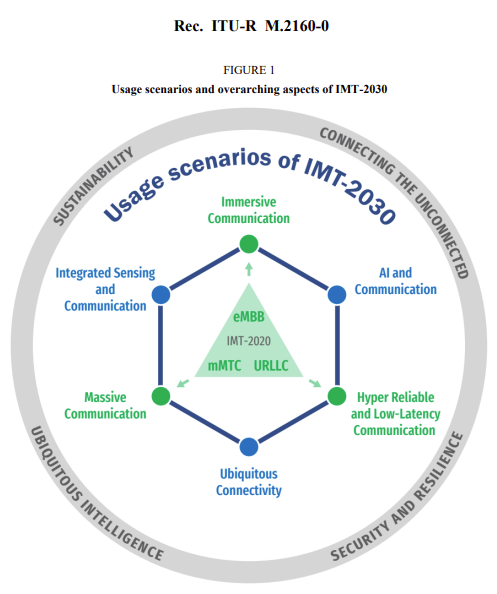
The objective of the SA1 study item as stated in the draft SID as:
“This study aims to identify high level principles and use cases - to define potential requirements to enable the 3GPP system to support the needs of new and enhanced services and scenarios, based on, but not limited to, IMT-2030 usage scenarios.”
There was considerable debate as to whether to take the IMT-2030 six as the framework for the technical report. At least two areas (that no-one challenged the significance of, as part of 6G service features), are notably absent in this listing: edge computing and communications and positioning/navigation services.
This then became the focus of a tussle on how to approach the scope of 6G within 3GPP – whether it should be based directly on the IMT-2030 framework of six primary services, or whether the IMT-2030 framework should be taken as an indicative input to which further input could be added.
Following the first approach would mean the TR would have six primary section headings. To accommodate these two extra areas, an initial proposal was to add the ‘compute’ to the ‘AI and communications’ and the ‘positioning’ to ‘ubiquitous communications’, thus preserving the six main headings.
However, this received a lot of well-reasoned opposition. First, AI is only one aspect of compute and the area should properly include at least edge compute as AI infrastructure. Second, in practical terms, the overlap between positioning, navigation, and timing (PNT) and ‘ubiquitous communications’ is satellites. However, ‘ubiquitous communications’ covers in-building and underground locations which are definitely not covered by satellites and one of the objectives of 6G is to include PNT within the terrestrial radio signal to avoid total dependence on satellites.
A counter proposal was to extend the number of section headings in the TR beyond the six from IMT-2030. The chairman went to the extent of asking for a show of hands on the two approaches and this was strongly in favour of this second option and the outline for the TR was drafted accordingly. However, when seeking consensus on the wording of each section heading, a certain Chinese manufacturing company raised an objection to any wording that (as it appeared) departed from the IMT-2030 six. The reason or motivation was never clear nor explained.
The draft, as agreed at the end of the meeting, has only four of the original six IMT-2030 heading (Integrated Sensing and Communication, Ubiquitous Connectivity, Immersive Communication, Massive Communication) and two more generic headings. The first to cover use cases from industry verticals (Further Use Cases on Industry and Verticals) and the second as an ‘anything else’ (Other Use Cases).
Satellite (Phase 4) (3GPP TR 22.887 V0.2.0 (2024-08))
There was a separate drafting session concerned with particular satellite use cases to augment the primary satellite use cases already agreed. These new use cases cover a range of more detailed scenarios mainly based around, a) the particular requirements of disaster scenarios and emergency services, and b) the use of multiple satellites in different orbits to give an overall optimised service.
A second drafting group met to consider service features which could enable energy optimisation and management and Railway Services.
Energy Related Services (Phase 2) (3GPP TR 22.883 V0.2.0 (2024-08))
Discussion here was mainly focused on APIs which would expose energy related information so that energy optimisation could be performed. This included network-based optimisation but also features that would allow customer based optimisation (an elementary one being postponing usage to a more energy efficient time), and also allow network operators to offer differentiated services based on energy efficiency.
Railway Services (Phase 6)
This second drafting group also considered additional features for the Future Railway Mobile communication System (FRMCS). (Note railways in Europe, and many other areas globally, have their own allocated frequencies and are updating their system from their specialised version of GSM called GSM-R direct to this specialised version of 5G).
Ambient IoT
The other ‘hot topic’ under discussion was ambient IoT (IoT devices which do not require power or battery but can ‘harvest’ energy from the environment, e.g. from the incoming RF signal). The main point of discussion was how or even why these would form part of the 3GPP scope. For example, it is perfectly possible to use a conventionally powered User Equipment (UE) gateway device to interface between the 3GPP system and the ambient IoT devices without any additional features from 3GPP. So, the largely unanswered question was whether this actually falls outside of the scope of 3GPP.
Impressions from the meeting
While there appears to be a reasonable length of time before 6G standards are due for completion around 2030, there are many stages in the process, and SA1 is working with a degree of urgency. (This may also reflect the large vendors’ hope that once standards are complete, operators will start ordering a new generation of equipment).
However, it is also clear that there are a number of new tensions which go beyond those seen in the development of the previous generations, such as whose IPR becomes embedded in the standards.
These tensions are already emerging with 5G, which has seen great success to date with enhanced mobile broadband (eMBB) – which improves 4G bandwidth and capacity without changing any business model. By way of contrast there has, so far, been minimal success with the other 5G services which are primarily aimed at industry verticals rather than end consumers.
While much is made of the widespread deployment of 5G non standalone (so not offering these other services) as the reason for the slow uptake, it’s not clear this is the only reason. Not least, if the network operators were seeing a big commercial pull from these industry verticals, surely they would not have delayed rollout of their 5G core.
This was an undercurrent throughout the meeting and it was also noticeable that different countries/regions had different attitudes on how to approach the issue.
A more heterogeneous architecture and business model
Up until now, mobile architecture has been highly integrated and 3GPP have had effective design control over all the essential elements; from the radio interface technology, the handset (at least the parts essential to telecoms), and the core network design and service features.
This worked well when the primary service was first voice telephony and then mobile broadband.
However, solutions to industry verticals need to integrate with the well-established architectures, standards, and technologies that each industry currently use. Moreover, beyond the purely technical and operational requirements, these industries have their own established players who are not going to simply hand over their business to the mobile operators and vendors.
It would therefore seem that the 3GPP architecture required to embrace each industry vertical will be considerably more heterogeneous than that currently assumed by 3GPP. The question I was left with was, “Will 3GPP adjust to this reality, or will the solutions simply emerge outside 3GPP’s sphere of influence and control?”.
SA and CT need to decouple from RAN
As a key example of this, it is clear 6G is a ‘multi-access’ architecture. This is already partially the case with 5G and 5GA with the integration of satellite access.
In the past, each new generation was largely led by the creation of a new RAN air interface and this formed the foundation of that generation’s architecture and services. And 3GPP seems largely wired this way. While the overt working method is to define 1) service features, 2) architecture, 3) RAN and CT technologies, it could be argued that the underlying reality is actually the practical process of 1) RAN technology, 2) architecture, 3) service features. A possible illustration of this is that IMT-2030 (and IMT-2020 before it) were essentially driven and defined with ITU-R, the radio part of the ITU.
For 6G to become what it sets out to be, it needs to more effectively decouple the services from the RAN technology. Indeed, for the network operators who have just made very large investments in their 5G RAN, the ability to implement 6G as an upgrade to their core network without needing a new RAN investment (with RAN investment driven purely by capacity and not service features), would ideal. However, this would not necessarily suit the commercial interests of the major vendors.
It would seem that this decoupling of SA and CT solutions from work in RAN is likely to be a practical issue within 3GPP in the next couple of years. Indeed, in many ways, this was one of the things leading to the impasse on ambient IoT noted above.
What does this mean for you?
While the big vendors remain very influential in 3GPP, and have a clear commercial motivation to retain as much control of the 6G process as possible, the very nature of 6G is working against this.
It would seem to me that there is going to be many opportunities for innovation in 6G which sit outside the current fairly homogeneous business model and service features, especially in working with industry verticals. While there will undoubtedly be moves to create 3GPP defined services for each industry vertical as fully embedded in a monolithic 3GPP system, it also seems unlikely that these will be efficient compared to solutions which are more decoupled and have a more loosely integrated architecture. Such a more loosely coupled architecture would seem to have minimal compromise in terms of service features and would remove the complexity, time delays, and blockage to innovation that results from detailed integration into the mobile system.
This also means that, in many cases, there is no need to wait for 6G to compete and start innovating in solutions to industry verticals as well as other services which sit beyond mobile broadband to consumers.
To find out more about what else has been happening in the world of Standards over the past quarter, download our report here.

